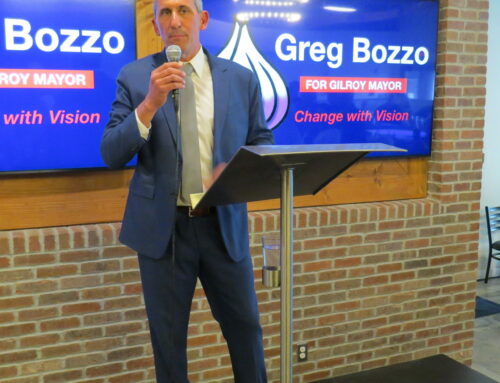New budget closes a $120 million funding gap

County Seal
By Staff Report
The budget for Santa Clara County for the fiscal year starting July 1 was approved at $11.3 billion at the June 15 Board of Supervisors meeting.
It is designed to enhance behavioral health and other core services while beginning to tackle a structural deficit expected to grow during the next several years amid a faltering economy. It also addresses access to housing and criminal justice reform.
The FY 2023-24 budget closes a $120-million funding gap by eliminating about 600 vacant positions and using a combination of one-time solutions, such as the use of reserves and delaying projects. Despite these reductions, the budget advances the board’s five strategic priorities: expanding access to behavioral health services, increasing access to housing, strengthening community safety and reforming the criminal justice system, enhancing support for children and families and promoting sustainability.
“Santa Clara County is investing heavily in mental health and substance use treatment facilities, services and workforce, in part stemming from the local emergency the Board declared in these areas 18 months ago,” said Supervisor and Board President Susan Ellenberg.
The budget marks a transition for the county, with the retirement of longtime County Executive Jeffrey V. Smith, M.D., J.D., at the end of June. He will be succeeded by County Counsel James Williams, who was also involved in the development of the budget.
“The FY 2023-24 budget continues the county’s important work to support our most vulnerable residents, while taking the first steps to resolve a structural deficit caused by the economic slowdown, inflation and high interest rates,” Smith said. “I am proud of all we have accomplished to improve behavioral health and medical care, create affordable housing, and provide many other vital services to individuals and families in Santa Clara County.”
The county projects the structural deficit will increase to $158 million by fiscal year 2024-25, with growth in the cost of providing services expected to outpace revenue growth in the short term. The regional economy has cooled since rebounding dramatically in the wake of the COVID-19 pandemic. High interest rates are slowing the growth of property tax revenues, the County’s largest source of funding, while inflation is raising the cost of supplies and contract services.
To eliminate the structural deficit, the county will focus in part on improving efficiency, seeking out new revenue sources, and redirecting resources to the highest priorities.
“The next few years will bring challenges but also incredible opportunities. We will work hard in the months ahead to ensure we maintain a balanced budget over the next few years,” Williams said.
The approved budget highlights our continued focus on expanding behavioral health services to the community. The county added hundreds of new beds for mental health care and detox, said Supervisor Otto Lee.
“Our biggest challenge remains — the inability to fill vacancies throughout our county from nurses, social workers and 911 dispatchers to sheriff’s deputies,” he said.
The board and the county executive have developed and adopted a balanced budget with contributions from county departments and various community-based partners, said Greg Iturria, the county’s budget director.
“Together, we have allocated the necessary funds to enhance the county’s safety net and maintain services that improve the lives of nearly 2 million residents in the county,” he said.
More information on the FY 2023-24 budget is available on the county’s budget and finance webpage. They will publish the final budget in the fall.
This story was rewritten from a press release sent June 16 from the county.






